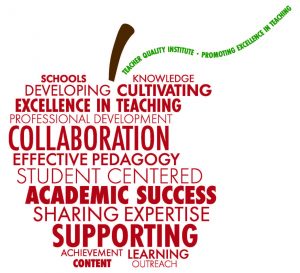What evidence-based tools can you use to self-assess your own teaching, identifying what you are already doing well, and what new techniques or approaches you may want to try?
15-minute Teaching Practices Inventory
The Teaching Practices Inventory, developed by Physics Education researcher Carl Wieman, was designed to characterize the teaching practices used in undergraduate science and mathematics courses. The inventory requires 10-15 minutes to fill out and provides a detailed characterization of practices used in all aspects of a “lecture” course. It has been tested with several hundred faculty members, refined over a 6-year period, and published.
http://www.cwsei.ubc.ca/resources/TeachingPracticesInventory.htm
1-page Rubric of General Teaching Practices
University of Kansas has developed a rubric for the evaluation of teaching, supported by the Association of American Universities; this is also a helpful tool for self-assessment and tracking of growth.
Self-Assessment Guide with links to education research studies
This Faculty Self-Assessment Guide from University of Oregon allows instructors to indicate the extent to which they are implementing an array of evidence-based teaching practices, with links to the supporting studies.
https://tep.uoregon.edu/files/tep_faculty_self_assessment_guide.pdf
10-minute Instructor Reflection Instrument
This 10-minute Instructor Reflection Instrument from University of Oregon is more open-ended, allowing the instructor to identify when and how they want to elaborate on their teaching.
The Teaching Self-Reflection Tool and Skills Checklist
This is a checklist of instructional behaviors and techniques for approaching student evaluations in a structured and reflective way, from Thomas Jefferson University.
UCLA Academic Personnel Office guidance on Teaching Evaluation
You can use UCLA CAP’s guidelines on teaching to write your teaching statement, based on what is outlined here.
Resources from CEILS Teaching Evaluation Symposium

CEILS hosted a symposium at UCLA on June 12, 2018, called “Exploring Practical Ways to Inspire and Reward Teaching Effectiveness and Instructional Innovation”. The event details can be found here. Several visiting speakers, including Emily Miller, Associate Vice President for Policy at AAU, Sierra Dawson, Associate Vice Provost for Academic Affairs at the University of Oregon, and Diane O’Dowd, Vice Provost for Academic Personnel at UC Irvine, shared resources on student ratings of instruction, peer teaching observations, and self-assessment of teaching practices, among others. Many thought leaders from the UCLA community also participated as panelists, moderators, and participants throughout the day. Please explore the resources shared by our colleagues.
- Click here to access the UCLA Box folder with handouts, rubrics, guidelines, and other materials shared during the symposium. A password is required to access the Box folder. Please email us at media@ceils.ucla.edu to request the password.
- Click here to view the spreadsheet with a list of the documents and Box folder locations.
CEILS also hosted visiting Scientific Teaching Scholar Philip Stark, Professor Statistics and Associate Dean of Mathematical and Physical Sciences at UC Berkeley, who gave a talk on November 2, 2018, entitled “Student Evaluations of Teaching: Managing Bias and Increasing Utility”. Resources shared at this event can be downloaded from the event page found here; these include slides from his talk, UC Berkeley’s guide for documenting teaching effectiveness and their guide to peer review of course instruction. We encourage you to check out these and our growing list of resources.
If you are looking for other ways to improve and evaluate teaching, you can check out our teaching guides on using Student Feedback, Peer Feedback, and Other Forms of Evaluating Teaching.

